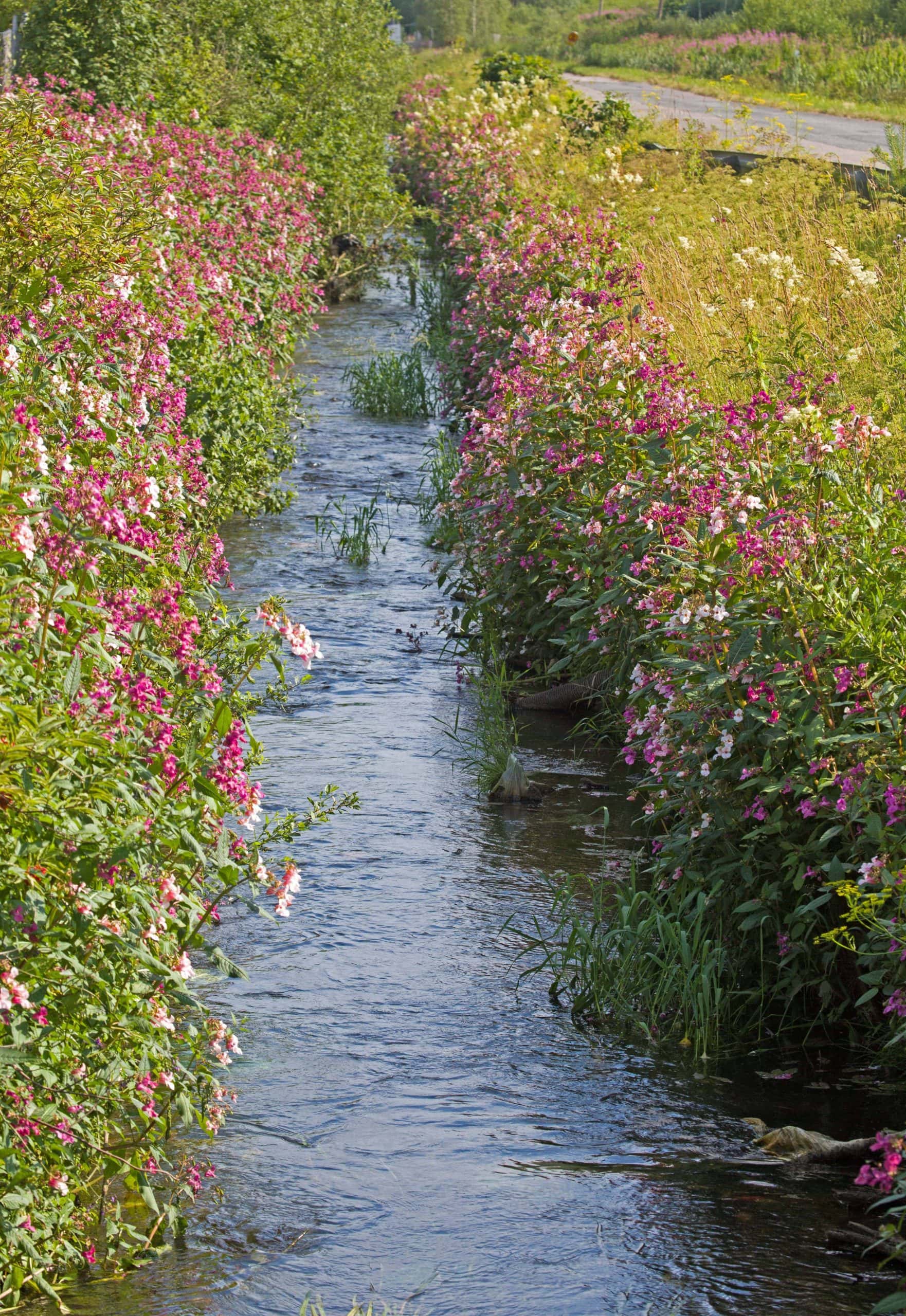What kind of plant is Himalayan balsam?
Himalayan balsam is widespread and established in Norway, Sweden, and Finland.
Himalayan balsam is an annual grass from Asia which can form large groups and displace native vegetation, thus reducing diversity. Himalayan balsam can threaten declining and threatened species, because it is also found in places of conservation value, in nature reserves and in the vicinity of threatened species. With its large flowers attracting insects, it competes for pollinators with native vegetation. In addition, Himalayan balsam can decrease the number of invertebrates both in and on the ground.
As the Finnish name “giant balsam” implies, individuals can be up to more than three metres tall. Its flowers grow in an erect raceme, and they are usually pink and often up to 4 cm in diameter. The flowers are usually pink. Himalayan balsam reproduces and spreads only from a seed. One individual can produce up to 4,000 seeds which, when ripe, can be cast up to seven metres away. Himalayan balsam does not tolerate drought, and it grows poorly in barren habitats. It favours moist habitats such as riversides, where its delicate roots do not hold the soil together as effectively as perennial vegetation, causing erosion. The soil that enters the water with rain degrades water quality and threatens spawning gravels used by fish, for example.
Start control measures before flowering
Control measures for Himalayan balsam should be started before flowering when the seeds are not yet ripe to prevent the seeds spreading into the environment. The most effective ways to get rid of Himalayan balsam are removing and cutting. Himalayan balsam is nice to remove, as it comes off the ground easily, and no protective gear is needed. Removing or cutting should be repeated two to three times during the growing season and during the next few years if necessary. Along streams, control measures should be started upstream.
Other ways to control Himalayan balsam
Sheep have also been used to control Himalayan balsam. Sheep like Himalayan balsam, and their pasturing can eradicate even the largest groups. Hot steam treatment has also been used to control Himalayan balsam, especially in cases where it has spread over large areas, and removing it would require too much work.




